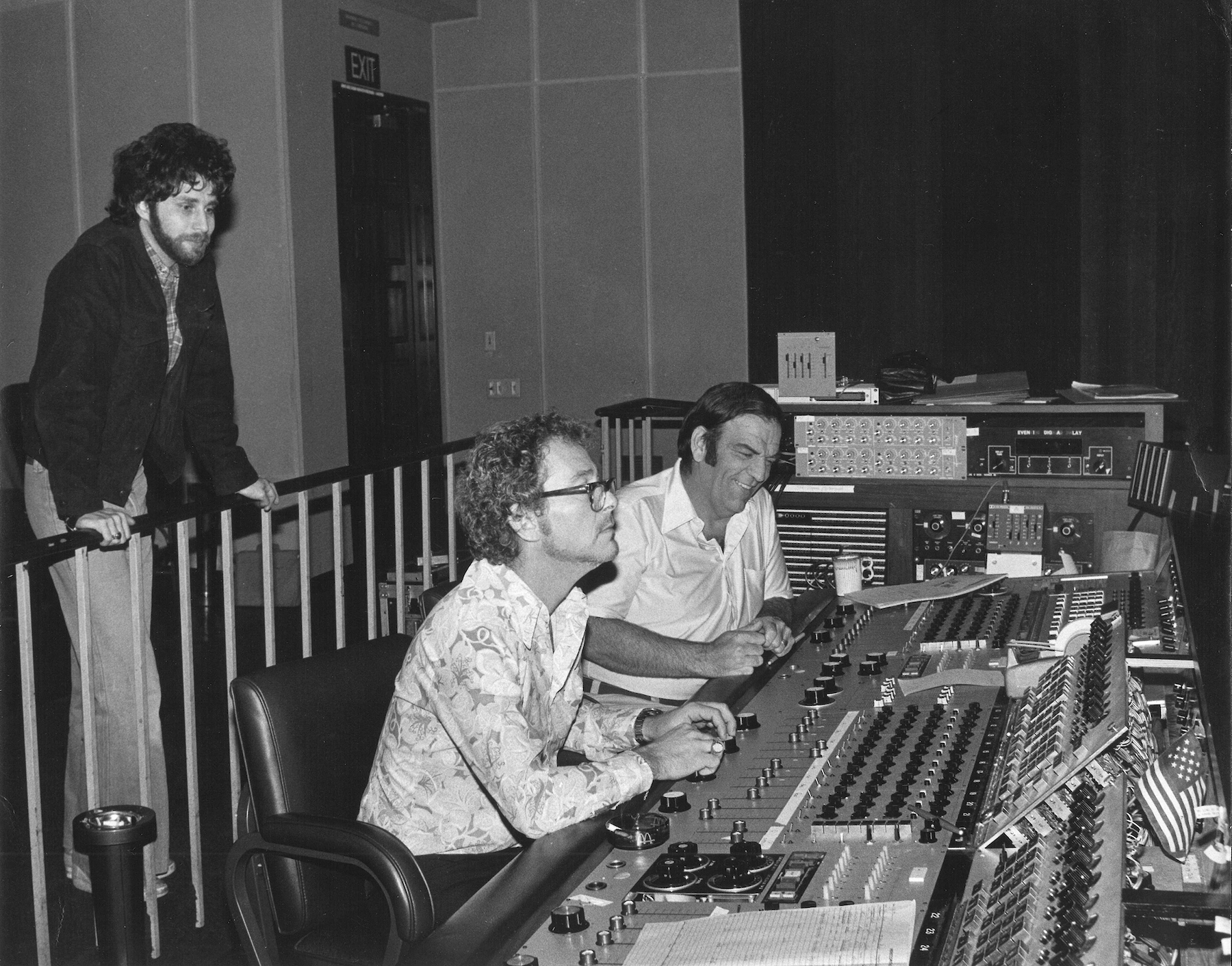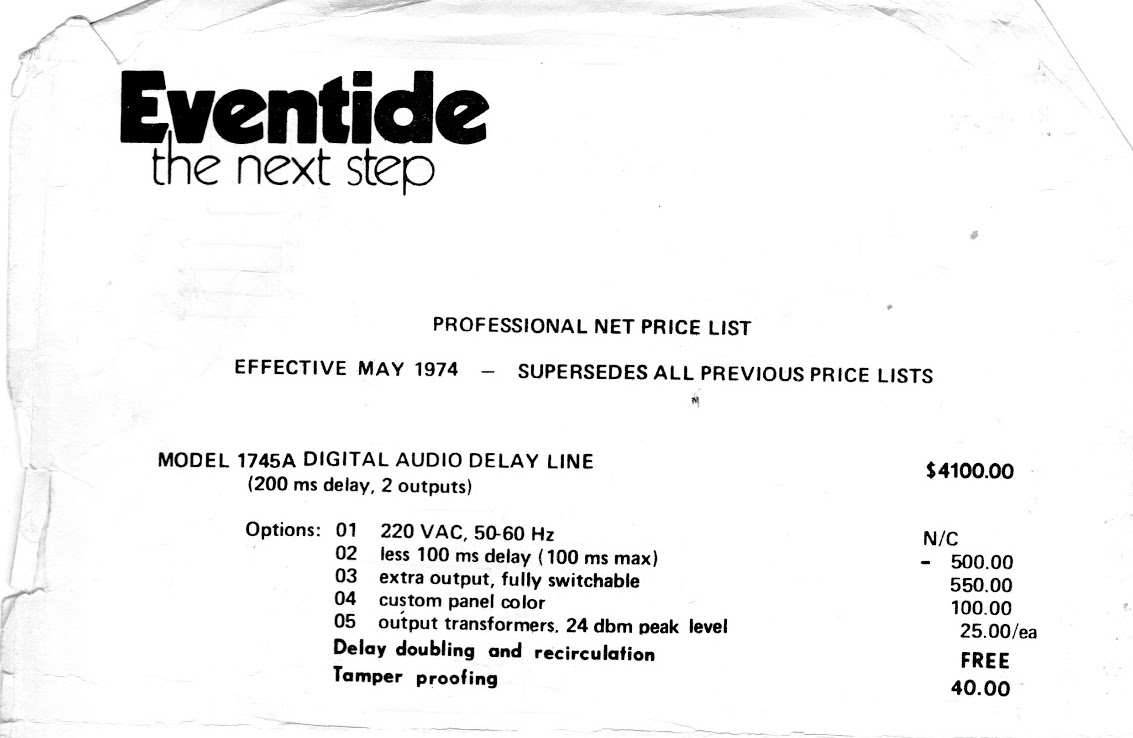Like the 1745, the 1745A used shift registers. The main difference was the front panel. By 1973, LEDs had become commercially available and a 7 segment LED was designed into the front panel. So instead of using big switches with screened legends on the front panel, the delay was selected by spinning a knob (turning a Richard Factor home-brewed optical encoder) and the delay time was displayed with numbers that lit up (LEDs). For studios that installed the 1745A, it was the first time a digital ‘read out’ appeared in their racks.



More than Just a Delay — First Glimpses of a New World
The 1745A was marketed as more than simply a utilitarian delay and the Instruction Manual described some of the new techniques that, for the first time, had become practical.



Doubling
One innovation was the ability to double the delay by cutting the sample rate in half. This was a new concept to users and the Instruction Manual, after explaining the consequence of sample rate reduction, offered this reassurance: “Do not let the foregoing scare you…”
Repeat
Signal Recirculation, “Repeat,” was a unique feature of the 1745A and an example of how a utilitarian device for simple delay morphed into a digital effects device. With the flip of a switch, the looper was born!
Using Special Effects Live
The Instruction Manual went on to imagine special effects that might be achieved by ‘storing’ different words or segments of audio; described thus “special effects which may be used to advantage under certain weird circumstances.” The alleged purpose? “…the amazement of the audience.” If you attended a Frank Zappa or Laurie Anderson concert back in the day, you’re likely to remember this to be true.
DDL 1745A Circuitboard Artwork


DDL 1745A Studio


DDL 1745A Ads and Price


Documentation


